Few places on Earth blend raw power and haunting beauty like the 500-kilometer stretch where the world’s oldest desert meets icy Atlantic waves. This untamed wilderness—spanning an area larger than Connecticut—holds shipwrecks older than your grandparents and dunes taller than 10-story buildings.
Imagine your boots sinking into rust-red sands while cold ocean mist kisses your face. Here, nature writes its own rules: lions patrol fog-shrouded beaches, and seals bask near century-old ship skeletons. The region’s indigenous name translates to “The Land God Made in Anger”—a poetic nod to its fierce, unyielding spirit.
This destination defies expectations at every turn. You’ll find UNESCO-recognized ecosystems where rare plants drink moisture from sea fog, and desert-adapted elephants roam sunbaked riverbeds. It’s a living museum of survival, where the scenery shifts from blinding white salt pans to charcoal-black mountains without warning.
Key Takeaways
- Stretches over 500 kilometers along Namibia’s Atlantic edge – longer than Florida’s coastline
- Features surreal collisions between towering dunes and crashing ocean waves
- Protected as part of a 16,000 sq km national park with UNESCO ecological significance
- Home to unique wildlife adapted to extreme desert-marine conditions
- Offers exclusive adventures far from crowded tourist hotspots
Table of Clarity for Your Ultimate Skeleton Coast Adventure
Planning your journey to this remote wilderness requires smart preparation. Our curated guide cuts through the complexity, helping you craft an itinerary that balances thrill-seeking with cultural discovery.
Quick Overview of Attractions and Experiences
| Experience Type | Key Attractions | Time/Effort Required |
|---|---|---|
| Wildlife Encounters | Cape Cross Seal Reserve (100,000+ seals) | 2-3 hours (easy access) |
| Cultural Immersion | Himba village interactions | Half-day (moderate) |
| Adventure Activities | 4×4 dune expeditions, quad biking | Full-day (high energy) |
| Scenic Exploration | Aerial flights over shipwrecks | 1-2 hours (relaxed) |
Key Highlights and Must-Know Details
This protected national park operates under strict access rules. Only three luxury camps exist within its boundaries, ensuring your safari remains intimate. Most visitors spend 3-5 days exploring diverse ecosystems.
Time your trip during June-October for cooler temperatures and optimal wildlife viewing. Coastal fog lifts by midday, creating perfect conditions for photographing rusted ship skeletons against golden dunes.
Physical challenges vary widely – from gentle beach walks to demanding dune hikes. Local guides recommend splitting your days between adrenaline-packed adventures and slower-paced cultural exchanges for balanced energy levels.
Why Visit Skeleton Coast
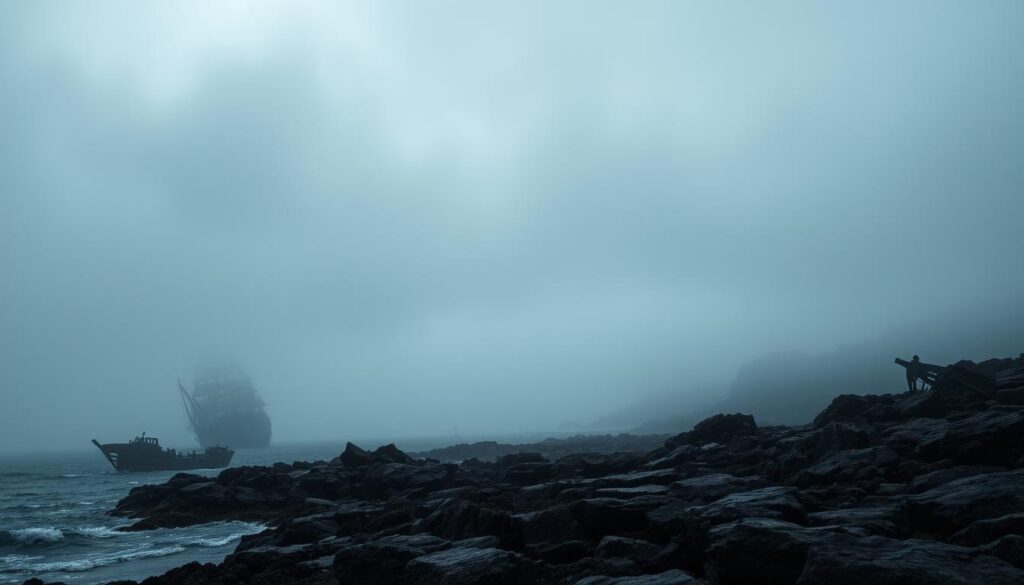
Step onto shores where history and wilderness collide, offering a journey through maritime mysteries and cultural resilience. This dramatic stretch transforms every visitor into both explorer and storyteller, blending natural forces with human determination.
Mysterious Shipwrecks and Maritime History
Explore rusted hulls emerging from the fog like ghostly sentinels. The Eduard Bohlen, stranded in 1909, now lies half-buried in dunes 400 meters inland—a surreal testament to shifting sands and powerful currents. These wrecks earned the area its ominous title, with whale bones adding stark contrast to the scenery.
| Shipwreck | Year Lost | Notable Feature |
|---|---|---|
| Eduard Bohlen | 1909 | Buried 400m inland by moving dunes |
| Suiderkus | 1976 | Modern wreck visible at low tide |
| Dunedin Star | 1942 | Inspired major rescue operation |
The cold Benguela Current collides with warm desert air, creating dense fog that disoriented sailors for centuries. Even today, GPS systems struggle with the coastline’s ever-changing sandbanks.
Cultural Context and Conservation Insights
Indigenous communities call this “The Land God Made in Anger”—a phrase echoing through generations. Semi-nomadic Himba tribes share survival wisdom honed over centuries, while conservationists protect desert-adapted lions that roam fog-drenched beaches.
Your visit directly supports:
- Anti-poaching patrols safeguarding endangered animals
- Community-led tourism initiatives preserving traditions
- Research on fog-harvesting plants sustaining the ecosystem
Main Attractions & Things to Do
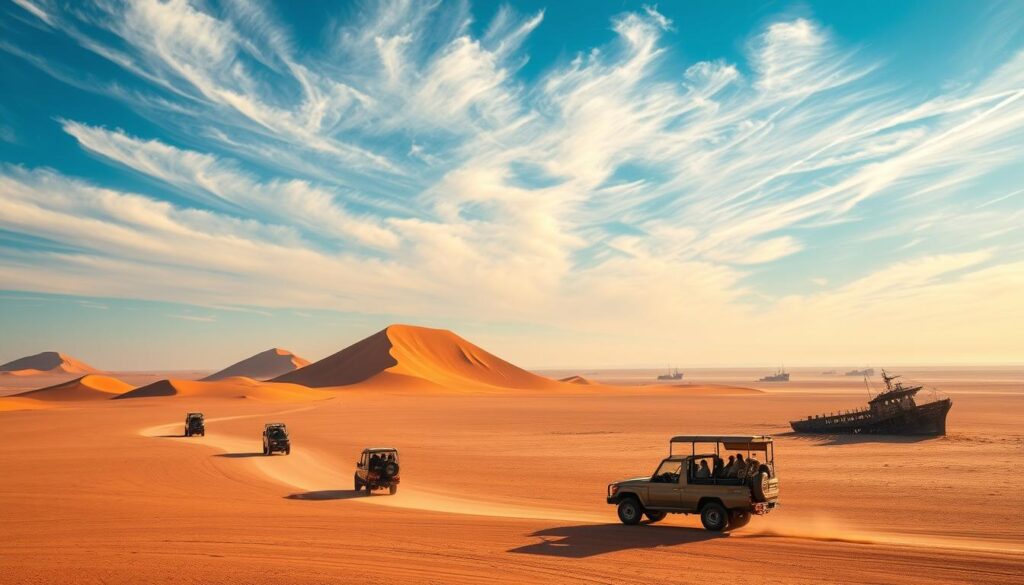
Unlock the secrets of a land where desert giants roam and adrenaline-pumping thrills await around every dune. This national park delivers experiences that rewrite the rules of exploration—from sky-high perspectives to ground-level wildlife dramas.
Adventure Activities & Scenic Flights
Soar above rusted ship skeletons and endless sand dunes during heart-pounding scenic flights. Pilots bank sharply to reveal hidden river valleys where desert-adapted elephants trek between water sources. Back on land, 4×4 expeditions plunge into the national park’s core, navigating terrain that’ll test even seasoned adventurers.
Quad bikes let you carve fresh tracks across mineral-rich plains. Time your ride for sunset when shifting light paints the dunes in fiery oranges—guaranteed to elevate your Instagram game.
Wildlife & Ecology Highlights
At Cape Cross, 200,000 barking seals create a deafening symphony during November’s breeding frenzy. Watch brown hyenas patrol the chaos, hunting vulnerable pups. Further inland, rare desert lions stalk gemsbok through fog banks—their survival depending on intricate ecological balances.
The park’s wildlife masters extreme conditions. Elephants memorize 60-mile water routes, while fog-drinking beetles hydrate entire food chains. Rangers reveal how ephemeral rivers sustain 250 bird species, making every safari drive a masterclass in desert adaptation.
Visit Skeleton Coast, Namibia: Essential Planning and Travel Tips
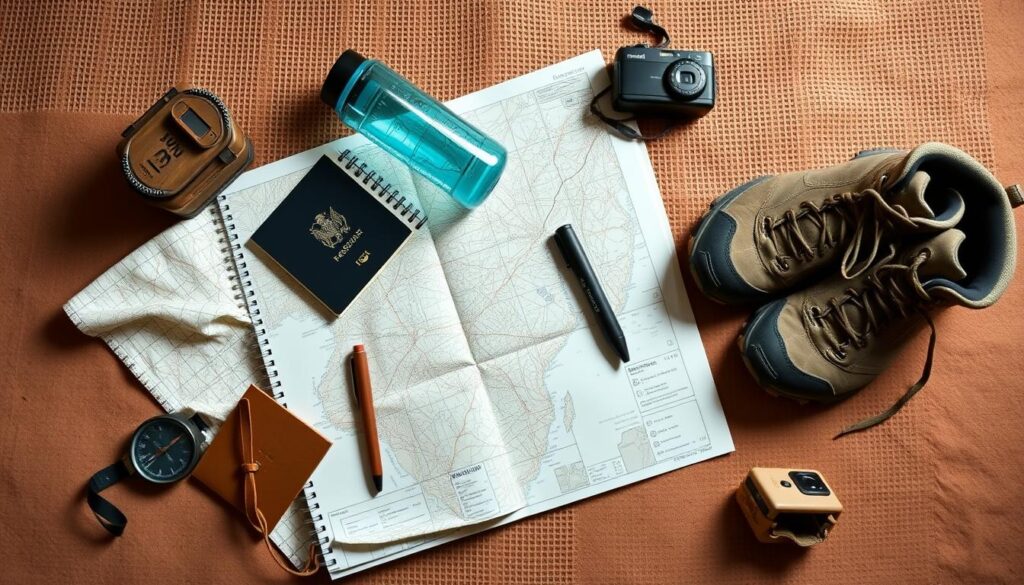
Crafting your journey to this remote wonder requires balancing adventure smarts with desert wisdom. Let’s transform logistical challenges into opportunities for unforgettable discoveries.
Best Time to Visit and Seasonal Considerations
Timing shapes your experience dramatically. May through September delivers crisp air (15-25°C) and clearer skies, perfect for tracking wildlife across rust-red sand. Migrating species cluster near waterholes, while reduced fog improves visibility for photography.
| Season | Conditions | Top Activities |
|---|---|---|
| Dry Season (May-Sept) | Mild days, chilly nights | Desert safaris, cultural tours |
| Wet Season (Oct-April) | Warmer, coastal breezes | Birdwatching, marine life viewing |
October-April brings unique rewards. Coastal mists create moody atmospheres for artists, while 50+ bird species nest along ephemeral rivers. Pack layered clothing—temperatures swing 30°F between dawn and midday.
Permits, Safety and Sample Itineraries
All travellers need national park permits secured through licensed operators. Guided tours aren’t just recommended—they’re mandatory beyond designated areas. “This isn’t terrain for improvisation,” warns veteran guide Lukas //Urib.
| Days | Focus | Highlights |
|---|---|---|
| 3-Day Express | Adventure & Scenery | Flightseeing, dune biking, seal colonies |
| 5-Day Immersion | Wildlife & Culture | Himba village visits, lion tracking, star gazing |
Essential packing? Sturdy boots, UV-protective gear, and backup camera batteries. Mobile networks vanish 40 miles inland—embrace the digital detox.
Getting There & Transport Options
Reaching this remote wilderness transforms ordinary travel into an expedition. Your journey begins with strategic planning—every mile brings you closer to landscapes untouched by mass tourism.
How to Reach the Remote Coastline
Most travellers land at Windhoek International Airport before connecting flights. From here, small planes whisk you northwest—watch as rusty dunes give way to the wild Atlantic shoreline. Ground routes demand rugged 4×4 vehicles and expert navigation across shifting sands.
Only six exclusive lodges operate within the protected area. These eco-conscious bases serve as launchpads for adventures along the Kunene River delta and beyond. Helicopter transfers offer dramatic aerial reveals of the coastline’s raw power.
Recommended Modes of Travel and Local Transfers
Choose your adventure style: thrill-seeking overland expeditions or time-efficient flights. Chartered Cessnas let you spot shipwrecks from above, while guided 4×4 convoys reveal hidden waterholes sustaining desert wildlife.
Local operators provide satellite phones and recovery gear—essential for traversing terrain that swallows unprepared vehicles. Travellers should book transfers early, as limited lodges mean high demand during peak seasons (June-October).
Remember: reaching this frontier requires surrendering to its rhythms. Delays become stories, detours transform into discoveries. Your reward? A world where fog-draped shores outnumber people by millions to one.
FAQ
What’s the best time to explore the Skeleton Coast?
Plan your trip during the dry season (May–October) for milder temperatures and clearer skies. Coastal fog often lingers in mornings, adding mystery to shipwreck sightings. Avoid summer heat (November–April), which intensifies the desert’s harshness.
Are permits required to visit the national park?
Yes. Entry permits are mandatory for the Skeleton Coast National Park. Secure these through registered tour operators or Namibia Wildlife Resorts. Restricted areas near the Kunene River require additional permissions due to ecological sensitivity.
Can I spot wildlife in this barren landscape?
Absolutely! Desert-adapted elephants, brown hyenas, and Cape fur seals thrive here. The Hoarusib River attracts lions, while coastal colonies host over 100,000 seals. Birdwatchers revel in flamingo flocks near seasonal lagoons.
How do I navigate the remote coastline?
4×4 vehicles are essential for rugged terrain. Most travelers join guided safaris—operators like Natural Selection or Wilderness Safaris offer expert-led journeys. Scenic flights reveal sweeping dunes and shipwrecks inaccessible by road.
Is it safe to camp along the coast?
Designated campsites like Terrace Bay provide basic facilities. Independent camping is discouraged due to extreme isolation, shifting sands, and scarce water. Always travel with sufficient supplies and emergency communication tools.
What cultural experiences are available here?
Engage with Himba communities near Opuwo to learn ancestral survival techniques. Some tours include storytelling sessions about maritime legends and the coast’s role in indigenous trade routes.
Are photography opportunities limited by fog?
Fog creates dramatic contrasts—perfect for moody shots of rusted ship hulls or lions prowling misty shores. Golden hours (sunrise/sunset) intensify the ochre dunes’ textures. Use polarizing filters to enhance skies.
Which lodges offer immersive stays?
Shipwreck Lodge blends avant-garde architecture with ocean views. Hoanib Skeleton Coast Camp combines luxury with research-focused lion tracking. For budget options, consider Torra Bay Camp’s seasonal availability.
- Kaas Plateau Travel Guide 2026: Best Time to Visit, Bloom Season, How to Reach & FAQs
- What Is the Quirimbas Archipelago Mozambique Known For? Complete Travel & Nature Guide
- Is Angola Safe to Travel in 2025? Your Essential Guide to Health, Crime, and Landmine Safety
- What Animals Live in Bale Mountains Ethiopia? Complete Wildlife Guide
- What to Do in Damaraland — Complete Travel Guide for First-Timers
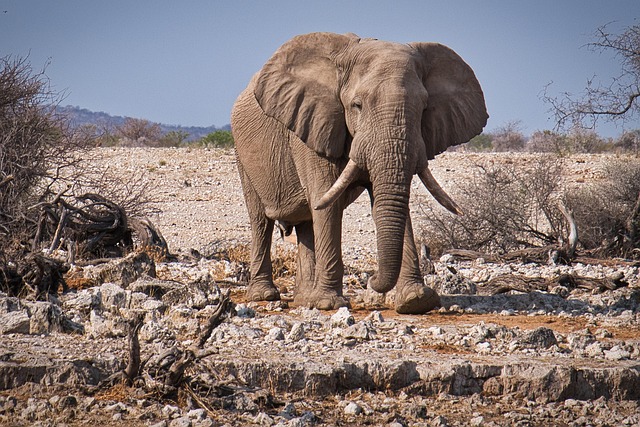

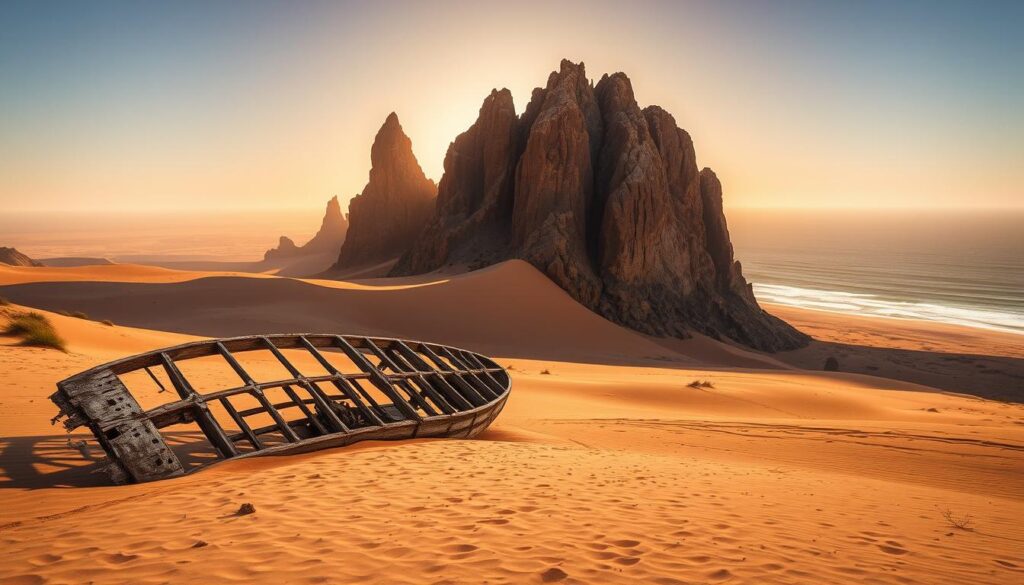
Thanks for sharing excellent informations. Your web-site is very cool. I am impressed by the details that you have on this website. It reveals how nicely you perceive this subject. Bookmarked this website page, will come back for more articles. You, my friend, ROCK! I found just the info I already searched all over the place and just couldn't come across. What a perfect site.
Thank you for your valuable feedback! It means a lot to us and encourages to write better!
Keep reading our articles and keep posting comments and feedback to make us do better.
For any particular destination or article you need us to write about kindly email us at info@xploreheaven.com
Superb post however I was wanting to know if you could write a litte more on this subject? I'd be very grateful if you could elaborate a little bit more. Cheers!
I like what you guys are up also. Such intelligent work and reporting! Keep up the excellent works guys I’ve incorporated you guys to my blogroll. I think it'll improve the value of my website 🙂
I wanted to thank you for this great read!! I definitely enjoying every little bit of it I have you bookmarked to check out new stuff you post…